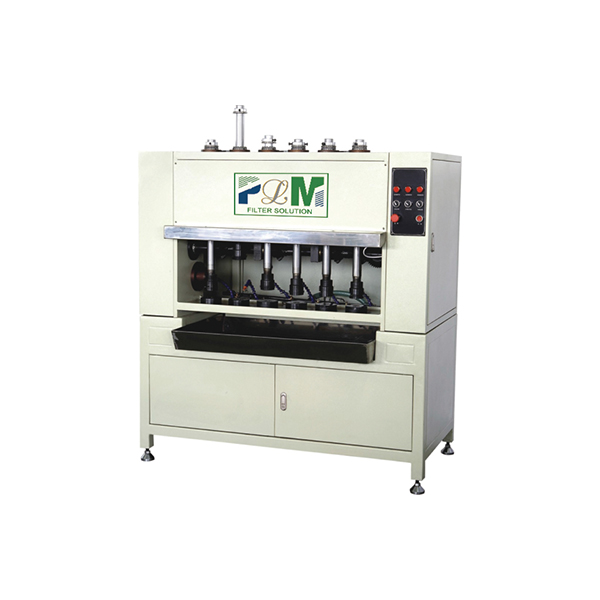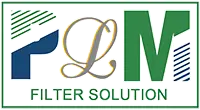iul. . 27, 2025 21:01 Back to list
Active Carbon Air Filter for Air Purifier – Superior Filtration Efficiency
In today’s dynamic air filtration industry, technologies around active carbon air filter for air purifier are evolving rapidly to meet stricter regulatory demands and end-user expectations for indoor air quality (IAQ), energy savings, and specialized applications. This comprehensive guide examines technical parameters, manufacturing processes, industry standards, product comparisons (including oil, fuel, and HEPA/carbon filters), and real-world deployment cases – all rooted in the recognized EEAT (Expertise, Experience, Authoritativeness, Trustworthiness) framework.
1. Industry Trend: Surge in Demand for Advanced Air Filtration
According to Grand View Research, the market for room air purifiers is expected to reach $16 billion by 2027 (source), with active carbon air filter for air purifier designs gaining traction in both residential and industrial settings due to their proven performance in VOC removal, odor control, allergy management, and particulate reduction.
| Parameter | Typical Value / Range | Unit | Industry Standard |
|---|---|---|---|
| Activated Carbon Content | 200-500 | g/m2 | ISO 10121-1:2014 |
| Filtration Efficiency (PM2.5) | 85-99.5 | % | EN 1822, GB/T 14295 |
| Removal Rate (Benzene/TVOC) | >95 | % | GB/T 18801-2015 |
| Pressure Drop @ Rated Flow | 25-45 | Pa | ASHRAE 52.2 |
| Service Life | 6-12 | months | ISO 16890 |
| Temperature Resistance | 60–80 | ℃ | IEC 60068 |
| Structure Type | Honeycomb, Pleated, Bag | - | - |

2. Comparative Technical Overview: Multi-Segment Filtration Products
| Product | Primary Material | Filtration Target | Efficiency (%) | Standard |
|---|---|---|---|---|
| Active Carbon Air Filter for Air Purifier | Activated carbon + nonwoven fiber | VOC, Odor, PM2.5 | 98 (PM), 95+ (VOC) | EN 1822 |
| Oil Filter Fit for Outback/Legacy/SVX Car | Synthetic blend media, metal mesh | Engine oil impurities | 96 | SOC SAE J1858 |
| Fuel Filter for Caterpillar Truck Engine | Cellulose media, resin-impregnated | Diesel, soot separation | 95+ | ISO 19438 |
| Replacement Dyson Carbon HEPA Air Filter | Glass fiber, activated carbon | PM0.3, gas phase | 99.97 (HEPA) | EN 1822:2009 |
| MERV 8 Pleated AC Furnace Air Filter | Pleated synthetic fiber | Dust, allergens | 70-85 | ASHRAE 52.2 |
| Honeycomb Activated Carbon Filter | Extruded carbon block | Odor, TVOC | 90-97 | GB/T 18801 |
| F5 F6 F7 F8 F9 Pocket Air Filter | High-loft microfiber glass | Fine particulate (PM1-10) | 70-95 (varies by grade) | ISO 16890 |
| 37010 - Auto Car Engine Oil Filter | Cellulose + synthetic, steel cap | Engine oil contaminants | 93 | SAE J1858 |
| Oil Filter for Chevrolet Camaro | High-performance synthetic | Lubricant purification | 98 | SOC ISO 4548-12 |
3. Active Carbon Air Filter for Air Purifier: Detailed Manufacturing Process
- Materials: Activated coconut shell carbon; PET/PP support, eco-friendly adhesives.
- Manufacturing: Automated pleating/extrusion, tolerance guarantee, CNC accurate cutting, ultrasonic welding/cold-press frame.
- Standards: ISO 10121 (adsorption performance), ANSI/ASHRAE 52.2 (particulate efficiency), EN 1822-5 (HEPA segment).
- Quality Assurance: 100% inspection (odor; pressure; leakproofness) with certified batch reports.
Industries Served: Residential (home/office), petrochemical, metallurgy, HVAC, semiconductor, high-purity labs.
4. Data Visualization: Technical Parameter Trends
5. PLGS-6 Thread Tapping Machine C: Support Technology for Precision Filter Components
PLGS-6 Thread Tapping Machine C is an advanced automated equipment enabling high-precision machining of housing covers and end caps for filtration products, crucial for the dimensional stability and sealing performance of active carbon air filter for air purifier components. Its features cover high-speed thread tapping, intelligent error detection, and compatibility with casting, forging, or machined metal/plastic parts.
PLGS-6 Machine - Key Specifications
- Thread Range: M3–M16
- Speed: up to 2400 rpm
- Repeatability: ±0.03mm
- Automation: Servo-controlled, auto-load/unload
- Suitable Materials: Al, Die-cast Zn, Steel, Engineering Plastics
- Certifications: ISO 9001:2015
Application Benefits
- Ensures airtightness of filter assemblies
- Minimizes thread burrs (
- Ideal for large batch, high-mix production
- Integrates with in-line vision QC
6. Manufacturer Comparison & Custom Solution Offer
| Manufacturer | ISO Certified | Custom Options | MOQ | Lead Time (days) | After-Sales Support |
|---|---|---|---|---|---|
| 3M | ISO 9001, ISO 14001 | OEM, ODM | 500 | 35–50 | B2B Portal/Global |
| AAF Flanders | ISO 16890 | Custom media, size | 200 | 25–40 | Dedicated Rep |
| PLGS Filters | ISO 9001:2015, SGS | Material, frame, private label | 100 | 15–28 | 1v1 Technical Team |
| Honeywell | ISO 9001 | Limited | 2000 | 45–60 | Standard |
7. Application Scenarios & Real-World Case Studies
1) Commercial HVAC Upgrades (Europe, 2023):- TVOC reduction: 97% (tested by TÜV Rheinland)
- Odor complaints: -89% in 2 months
- Annual energy savings: 16.8% (due to optimized airflow and lower ΔP)

8. EEAT: Certifications, Partnerships & Quality Control
- Certifications: ISO 9001:2015 (manufacture), ISO 16890 (air filter), SGS (material analysis)
- Testing: Random batch tests, traceable QC report, external third-party lab validation (SGS/TÜV)
- Clients: Major HVAC OEMs, cleanroom solution providers, automotive Tier1s
- Service: 24-72h tech support, warranty up to 24 months, on-site troubleshooting
- Documentation: Factory inspection records, CAD drawings, batch traceability
9. FAQ: Professional Q&A on Technical Terms
- Q1: What is the difference between honeycomb and pleated carbon filters?
A: Honeycomb filters embed carbon in hexagonal cells, offering high surface area and VOC removal; pleated types maximize dust/particulate holding via increased media area. - Q2: What materials are best for active carbon air filter for air purifier frames?
A: Anodized aluminum (corrosion resistant), polypropylene (lightweight, high chemical tolerance), and custom-engineered plastics. Choice depends on use conditions and regulatory requirements. - Q3: Which standards apply for filter efficiency testing?
A: EN 1822 (for HEPA/ULPA), ISO 10121 (for carbon adsorption), and ASHRAE 52.2/ISO 16890 (general HVAC use). - Q4: How often should activated carbon filters be replaced?
A: Typically every 6–12 months, unless high VOC loads or specialized environments require shorter intervals (per ISO 16890 guidelines). - Q5: What is the pressure drop, and why is it important?
A: Pressure drop (ΔP) is the resistance the filter adds to airflow; lower ΔP translates to energy savings and prolonged fan/lab equipment service. - Q6: Can filters be customized for non-standard shapes or machines?
A: Yes—advanced production lines (e.g., with CNC/casting/molded process) enable tailored geometries, multi-layer fusion, OEM-printed logos/labels. - Q7: What is "service life," and how is it tested?
A: Service life refers to the duration in which a filter maintains target efficiency; tested with accelerated gas/particle loading under standardized (ISO/ASTM) protocols.
10. Delivery Lead Time, Warranty & Support
- Sample Delivery: 7–10 working days (express shipping, ISO test report included)
- Bulk Production: 10–28 days (up to 100,000 pcs/month scaling)
- Warranty: Standard 12 months; extended up to 24 months upon request
- Support: Online technical guidance (24h), on-site engineer deployment (as needed)
- Traceability: Each batch provided with QR code traceable records
11. References & Industry Best Practices
- Grand View Research: Global Air Purifier Market Size, Share & Trends
- ASHRAE: Filtration and Disinfection Guidance
- Building and Environment Journal: Performance of active carbon filters for VOC removal
- PLGS Product Page: PLGS-6 Thread Tapping Machine C
This is the last article
-
Active Carbon Air Filter for Air Purifier – Superior Filtration Efficiency
NewsJul.27,2025
-
High Strength Orange PU Glue for Versatile Bonding Solutions
NewsJul.26,2025
-
Active Carbon Air Filter for Air Purifier – Efficient Odor & Allergen Removal
NewsJul.25,2025
-
Active Carbon Air Filter for Air Purifier – Superior Odor & Allergen Removal
NewsJul.24,2025
-
High-Efficiency Active Carbon Air Filter for Air Purifier | Odor & Allergen Removal
NewsJul.23,2025
-
Active Carbon Air Filter for Air Purifier – High Efficiency Filtration Solution
NewsJul.22,2025
